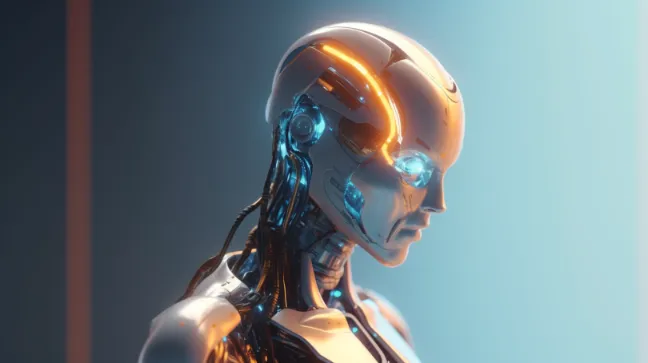How Many AI Chatbots Are There?
AI chatbots have become increasingly popular in recent years, as businesses look for new ways to engage with customers and streamline their operations. These automated systems use artificial intelligence to interact with users, answer questions, and perform tasks without the need for human intervention. But just how many AI chatbots are there, and what impact are they having on the market?
The Current State of AI Chatbots
The market for AI chatbots is growing rapidly, with an estimated 300,000 chatbots currently in operation across various industries. This number is expected to continue to rise in the coming years, as more businesses recognize the benefits of using chatbots to improve customer service and increase efficiency.
According to recent statistics, the global chatbot market is expected to reach $9.4 billion by 2024, with a compound annual growth rate of 29.7%. The most popular industries using AI chatbots include healthcare, banking, and e-commerce, where they are used to provide personalized customer service, automate routine tasks, and improve overall efficiency.
Types of AI Chatbots
There are three main types of AI chatbots: rule-based, machine learning, and hybrid. Rule-based chatbots operate based on a predefined set of rules and can only respond to specific questions or commands. Machine learning chatbots, on the other hand, use natural language processing to learn from user interactions and improve their responses over time. Hybrid chatbots combine elements of both rule-based and machine learning chatbots to provide more personalized and accurate responses.
Benefits and Drawbacks of AI Chatbots
AI chatbots offer several benefits for both businesses and consumers. They can provide 24/7 customer service, reduce response times, and free up employees to focus on more complex tasks. However, there are also drawbacks to using AI chatbots, such as their lack of personalization and accuracy.
While AI chatbots can learn from user interactions, they are not capable of understanding the nuances of human language and may struggle to provide accurate responses in certain situations. Additionally, some consumers may prefer to interact with a human representative rather than an automated system.
Future of AI Chatbots
The future of AI chatbots looks promising, with potential advancements in AI technology leading to more personalized and accurate responses. Some experts predict that chatbots will become even more integrated into our daily lives, with the ability to handle more complex tasks and interactions.
AI chatbots are also expected to have a significant impact on various industries, from healthcare to finance, as businesses continue to look for ways to improve efficiency and customer service.
The AI Chatbot Landscape
Given the large number of AI chatbots in use, one might wonder about the variety available. The answer is staggering; with each industry, and sometimes each company, utilizing unique chatbot designs and functionalities. While the underlying technology might be similar, the application and execution vary significantly, leading to a rich landscape of AI chatbots that cater to a wide range of needs and requirements.
Personalized AI Chatbots
The field of personalized AI chatbots has seen substantial growth, as more businesses recognize the importance of a tailored user experience. These AI chatbots can adapt their responses based on the user’s previous interactions, thereby creating a more engaging and personalized experience. However, designing and implementing personalized AI chatbots requires a deep understanding of customer behavior and preferences, which can be a challenging task.
The Role of AI Chatbots in Data Analysis
One of the less discussed but highly valuable aspects of AI chatbots is their role in data analysis. Through their interactions with users, AI chatbots collect a wealth of data that can be used to gain insights into customer behavior and preferences. Businesses can leverage this data to improve their services, create targeted marketing campaigns, and make informed decisions. With more than 300,000 AI chatbots in operation, the amount of data generated is vast and highly valuable.
AI Chatbots and Customer Satisfaction
Customer satisfaction is a critical metric for businesses, and AI chatbots play a pivotal role in enhancing this. By providing instant responses, resolving queries efficiently, and offering 24/7 availability, AI chatbots contribute significantly to improving customer satisfaction. However, there are still challenges to overcome, including understanding the nuances of human language and improving the level of personalization.
Chatbots in the Age of Privacy Concerns
In the age of data breaches and privacy concerns, the use of AI chatbots raises important questions. While these systems offer numerous benefits, they also collect and store personal data from users. It is crucial for businesses to ensure that they are using and storing this data responsibly, in compliance with privacy laws and regulations. In the future, we might see more advanced AI chatbots designed with privacy and data protection in mind.
AI Chatbots in Non-Profit Organizations
Non-profit organizations are also beginning to leverage AI chatbots to engage with donors, volunteers, and beneficiaries. With tight budgets and limited staff, these organizations can benefit significantly from the efficiency and convenience offered by AI chatbots. This is a relatively new area of application, and we can expect to see more growth and innovation in the coming years.
AI Chatbots in Education
The education sector is another area where AI chatbots are making their mark. From answering student queries to providing personalized learning experiences, AI chatbots are transforming the way education is delivered. Despite the challenges of implementing AI technology in the classroom, the potential benefits are immense.
The Potential of Voice-Based AI Chatbots
While text-based AI chatbots are widely used, the potential of voice-based chatbots should not be underestimated. Voice-based AI chatbots can provide a more natural and engaging user experience, especially for users who may struggle with text-based interactions. As voice recognition technology continues to improve, we can expect to see a rise in the use of voice-based AI chatbots.
In Conclusion
With an ever-increasing number of AI chatbots in existence, the impact of these systems on various industries and our daily lives continues to grow. While there are challenges to be addressed, such as improving personalization and ensuring data privacy, the potential benefits are significant. As technology continues to evolve, the landscape of AI chatbots will undoubtedly continue to expand and transform, bringing new opportunities and challenges along the way.






